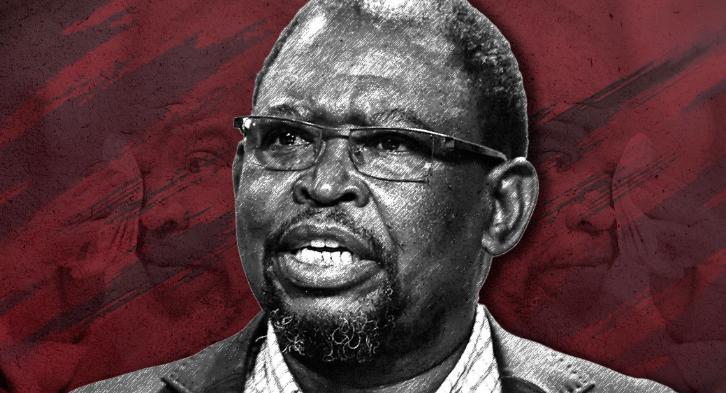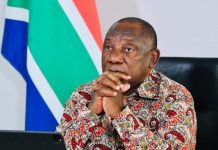Africa-Press – South-Africa. South Africa’s economy is not growing fast enough to make a meaningful impact on the government’s growing debt burden.
The economy needs to grow at over 2.5% to make a noteworthy impact on the state’s debt trajectory, but it is not even close to that number, with growth for 2025 estimated at around 1%.
In the years before, the economy has averaged an annual growth rate of 0.8%, which has limited tax revenue growth and aggravated the country’s debt-to-GDP ratio.
In the meantime, the government’s already enormous debt burden continues to grow, alongside the R1.2 billion-a-day in debt-servicing costs eating away at the national budget.
Citadel chief economist Maarten Ackerman explained that only through sustained reform and growth exceeding 2.5% can South Africa begin to stabilise this debt trajectory and achieve long-lasting fiscal consolidation.
However, Citadel only forecasts growth of below 1% for 2025 and up to 1.5% for 2026, meaning the country is not close to reaching this 2.5% target.
Even more optimistic growth projections do not come close to this number, with the National Treasury itself only forecasting 1.4% real GDP growth for 2025 and 1.6% for 2026.
Notably, the growth estimated for 2025 would be an improvement over 2024’s lacklustre 0.5%, but Ackerman said this is not close to what is needed.
“Although growth has improved slightly, both the fiscal deficit and debt-to-GDP ratio remain elevated,” he said.
“National Treasury’s revised revenue and growth assumptions will likely reflect optimism that may not fully align with the realities of global and domestic headwinds.”
Ackerman noted that South Africa has seen some short-term improvements compared to the start of this year.
He highlighted the less severe than expected impact of United States tariffs, a resilient US economy, and unexpected tailwinds for South Africa as factors working in the country’s favour.
The unexpected tailwinds arose largely from fears over the US dollar’s dominance as a reserve currency, which pushed investors toward the tried and true safe haven of gold.
The gold price has reached record highs in 2025, crossing the $4,000 per ounce mark. This, combined with higher platinum prices, proved to be a boon for South Africa’s commodity-focused economy.
Driven by its many listed mining giants, the JSE also achieved one of its best years on record, with the local MSCI index posting a return of over 50% year-to-date.
The rand also benefited from the commodity rally and a weaker US dollar in 2025, strengthening around 8% against the greenback in the year to date.
All of these factors mean South Africa’s economic growth is unlikely to be as dire as expected at the start of this year, but Ackerman warned against complacency in light of these windfalls.
Cautious optimism
Citadel chief economist Maarten Ackerman
Ackerman’s comments come in light of the upcoming Medium-Term Budget Policy Statement (MTBPS), which Finance Minister Enoch Godongwana is expected to present on 12 November.
The MTBPS, sometimes called the ‘mini-budget’, will provide an update on the government’s fiscal health and the implementation of the 2025 national Budget.
Ackerman explained that the global picture has shifted significantly since the 2025 Budget was presented in May, with South Africa in a seemingly far better place than at the start of the year.
Because of this, Ackerman expects the National Treasury to maintain a disciplined fiscal stance while adopting a cautiously optimistic stance when presenting the MTBPS.
However, he warned that, despite short-term improvements, the state must not become complacent.
Despite the country’s short-term wins in 2025 to date, it is still far from reaching the 2.5% growth it needs to make a meaningful change and address the government’s growing debt burden.
In its May 2025 Budget, the National Treasury said it plans to stabilise government debt at 77.4% of GDP in the 2025/26 financial year.
This is not a new promise, as the Treasury has included debt stabilisation on its to-do list in nearly every Budget for the past decade.
In the meantime, the government’s debt burden has grown to R5.2 trillion, and debt service costs have ballooned year after year, with the state now paying R1.2 billion a day in interest.
While the government achieved a primary budget surplus, the key to stabilising its debt burden, in 2024 and plans to do so again in 2025, this may not be enough.
Ackerman said South Africa can only strengthen its fiscal position by accelerating reforms that improve the ease of doing business.
This includes reducing red tape, addressing infrastructure bottlenecks and enhancing competitiveness.
“Only through sustained reform and growth exceeding 2.5% can South Africa begin to stabilise its debt trajectory and achieve lasting fiscal consolidation,” he said.
“The key takeaway from this MTBPS must be the importance of policy certainty and reform momentum, without which, even a stronger economy cannot deliver sustainable progress.”
For More News And Analysis About South-Africa Follow Africa-Press






